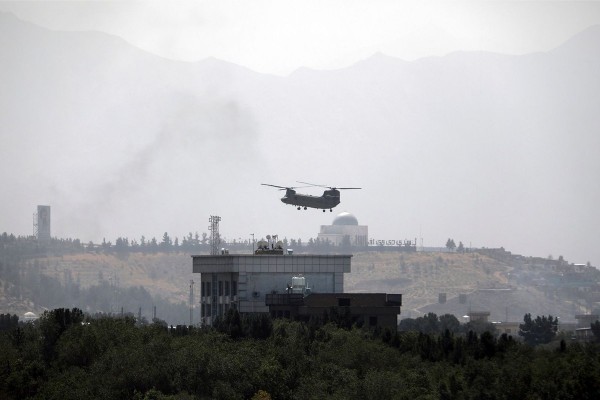Less time in airport lines: NEXUS members flying within Canada, within the U.S., or trans-border and abroad are spending less time in airport screening lines, as well as less time waiting for customs and immigration clearance into either country.
NEXUS members now enjoy dedicated passenger screening lines at 14 Canadian airports, with shorter wait times whatever their destination.
Similarly in the U.S., Canadian NEXUS members may now use dedicated “Pre-√” passenger screening lines at more than 100 airports in the U.S.
Canadian NEXUS members are now also eligible to use Global Entry kiosks when flying to the U.S., even if they are coming from a third country.
There are now over 917,000 NEXUS members, an increase of approximately 50 per cent since the Action Plan was announced in 2011.
Smoother baggage connections through the U.S.: Passengers can make tighter flight connections through U.S. cities with greater assurance that their baggage will be waiting for them at their final destination. For the air industry, there will be significant cost savings (estimated to be $50 million annually).
Canada is installing certified baggage screening equipment at the eight Canadian airports where the U.S. offers preclearance services. Previously, whenever a passenger flew from Canada to the U.S. with an onward connection, the checked baggage had to be screened once on departure from Canada, and again at the connecting U.S. airport, resulting in delays, missed connections and increased costs for airlines and travellers.
The U.S. is lifting the rescreening requirement as the equipment is installed airport-by-airport.
IMPROVING LAND BORDER CROSSINGS FOR CANADIANS
Faster border crossings through additional NEXUS lanes: NEXUS members have access to eight new NEXUS lanes at the land border, saving an average of 70 per cent in processing time compared to travellers in regular lanes.
NEXUS members can save time at Canada-U.S. land border crossings thanks to access to NEXUS lanes when entering Canada, and to NEXUS and Ready lanes when entering the U.S.
Canada has opened additional NEXUS lanes at Abbotsford, B.C.; Douglas, B.C.; Fort Erie, Ontario; Lacolle, Quebec; Pacific Highway, B.C.; Queenston, Ontario; Sarnia, Ontario; and Windsor, Ontario.
Reduced border congestion through improved border infrastructure: Canada is reducing border wait times and lessening traffic congestion for over 1.5 million cars and buses each year through investments in infrastructure and facilities upgrades: North Portal, Saskatchewan ($10 million); Emerson, Manitoba ($10 million); Lansdowne, Ontario ($60 million); and, Lacolle, Quebec ($47 million).
Emerson is the main Canada-United States (U.S.) border crossing in Manitoba with almost $19 billion in two-way trade in 2012 and over 300,000 passenger vehicles.
The Lansdowne Border Crossing, on the Canadian side of the Thousand Islands Bridge, saw over $14 billion in two-way trade in 2012 and over 800,000 passenger vehicles.
The North Portal Border Crossing is the main Canada-U.S. border crossing in Saskatchewan with almost $12 billion in two-way trade in 2012 and 92,000 passenger vehicles.
The Lacolle, Quebec-Champlain, New York border crossing is another critical border crossing with over $21 billion in two-way trade in 2012 and over 780,000 cars and buses.
Better travel planning through border wait time technology: Travellers in B.C. and Ontario are already able to better plan their cross-border journeys thanks to the installation of technology that is making accurate and up-to-date information about wait times available online or on electronic message boards on the approaches to major crossings.
Canada and the U.S. have installed wait time technology at six locations in B.C. and Ontario, and will be bringing it to 14 additional sites. These investments are estimated to have led to an annual benefit of $13-$19 million in the value of time saved by drivers.
In the Lower Mainland, B.C., for example, travellers approaching the Pacific Highway or Peace Arch (Douglas) crossings can access current wait times at both crossings, meaning drivers can choose the crossing with the shortest lines.
FACILITATING CROSS-BORDER BUSINESS
Reduced costs by screening once, accepting twice (Integrated Cargo Security Strategy (ICCS)): Costs to shippers, importers and governments will be reduced, and goods coming from offshore will flow between Canada and the U.S. more efficiently. Cargo will be inspected once when it first arrives in Canada or the U.S. (at the perimeter) so duplicative re-inspection at the Canada-U.S. land border can be reduced or eliminated.
To shape and validate the ICSS “screened once, accepted twice” principle in the marine-to-rail context, Canada and the U.S. are running a pilot project at the marine port of Prince Rupert, B.C., which has a dedicated rail line to the U.S. land border, enabling the accelerated movement and tracking of secure cargo.
The pilot is demonstrating the benefits of shifting inspections from the land border to the perimeter: pilot trains from Prince Rupert are crossing the border at International Falls, Minnesota in an average of 19 minutes, rather than two hours. The Prince Rupert pilot assessment period is expected to be completed by Spring 2014.
A parallel pilot is underway in Montréal, Quebec, testing the “screened once, accepted twice” principle in the marine-to-highway context for offshore cargo arriving in Canada and destined to the U.S. via highway. The Montréal pilot evaluation is expected to be completed by Spring 2014.
Less border congestion through pre-inspection of commercial truck cargo: Reduced border congestion for all vehicles, including commercial trucks, is the aim of pilot projects that test primary U.S. inspection of commercial truck cargo on the Canadian side of the land border. Potential benefits could be greatest at crossings where capacity is constrained – particularly at our cross-border bridges.
Canada and the U.S. conducted Phase I of a pre-inspection pilot between June and December 2013 at the Pacific Highway crossing between Surrey, B.C. and Blaine, Washington. U.S. Customs and Border Protection officers pre-inspected more than 3,500 commercial trucks (between June and December 2013) with nearly all trucks proceeding with only a rolling stop at the exit booth on the U.S. side.
Phase II of the pre-inspection pilot will be launched in January 2014 at the Peace Bridge crossing between Fort Erie, Ontario and Buffalo, New York. It will directly test how pre-inspection could enhance border efficiency and reduce wait times to facilitate legitimate trade and travel.
Predictability for cross-border business travellers: Business travellers crossing the Canada-U.S. border for short-term activities benefit from more predictable border decisions and updated policies around cross-border business travel. Stakeholders also benefit from the opportunity to provide feedback each year on how Canada and the U.S. could make additional improvements to cross-border business travel.
Both countries have enhanced their training and guidance manuals for border officers to improve the consistency of border determinations.
The U.S. is providing advanced adjudication for business travellers to identify and resolve potential issues prior to the actual date of travel, eliminating a key source of uncertainty.
The U.S. has clarified its policies around the temporary entry of business visitors such that those providing after-lease service (also referred to as “during-lease”) are now being treated the same as those providing after-sale service, an important improvement for Canadian firms that are increasingly leasing, rather than selling, machinery to American clients.
Canada and the U.S. now hold annual joint consultation sessions with stakeholders from both countries to seek additional ideas on facilitating business travel. The latest consultations were held on December 12 and 13, 2013 in Bellingham, Washington and Vancouver, B.C., respectively.
Faster and simplified border processes for low-value shipments: Commercial courier shipments valued at less than $2,500 each are now moving more quickly across the border and at less administrative cost, as a result of increased and harmonized low-value thresholds. An estimated 1.5 million additional shipments into Canada are now eligible for this expedited customs clearance. Two courier firms reported an increase in volumes of approximately 5-6 per cent, representing more than a quarter of a million shipments for them alone, with great reductions in the overall cost of clearance.
Canada and the U.S. have increased and harmonized the expedited customs threshold for low-value shipments to $2,500 (up from $1,600 in Canada and $2,000 in the U.S.).
To allow more shippers to take advantage of NAFTA duty free treatment, Canada has also increased (to $2,500) the threshold for exempting low-value shipments from NAFTA “certificate of origin” requirements, thereby aligning it with the U.S.
These initiatives are of direct benefit to smaller Canadian manufacturers, such as those who use courier services to import or export specialized parts and components, as well as to shippers and customers in both countries.
IMPROVING SAFETY AND SECURITY FOR CANADIANS
Reduced risk of immigration fraud: Canadian and U.S. decision-makers are better able to prevent immigration fraud due to enhanced information sharing on third-country nationals applying to enter our perimeter, particularly individuals whose visa applications are refused, and/or individuals who are removed from Canada or the U.S. for visa violations.
More than 15,000 records have been shared, doubling the volume from a year ago. Increased sharing of fingerprints on asylum seekers in each country is also strengthening our asylum systems. For example, a fingerprint belonging to a recent asylum claimant in Canada identified the claimant as a person with a different identity in the U.S. who also had a lengthy criminal history.
This initiative is authorized by the new Canada-United States Immigration Information Sharing Treaty and guided by the Joint Statement of Privacy Principles.
Stronger enforcement through a new Entry/Exit system: Border and immigration integrity and enforcement is being strengthened through a new Entry/Exit system. This system is allowing Canada and the U.S. to securely exchange limited information on third country nationals crossing the land border so that a record of land entry into one country becomes a record of exit from the other country. Between 10,000-15,000 records are currently being shared daily.
Entry/Exit currently applies to only third-country nationals, people who are neither citizens of Canada nor citizens of the U.S. Canada is closing the loop on an individual's travel history by having a record of entry and a record of exit.
Entry/Exit is allowing the Canada Border Services Agency (CBSA) to focus their immigration enforcement efforts on people who are not known to have left the country, as well as to enhance national security and law enforcement investigations.
Entry/Exit is also strengthening the determination of whether individuals have met permanent residency requirements as well as eligibility requirements to apply for Canadian citizenship.
Better protection of shared waterways: Our shared waterways are better protected and barriers to effective law enforcement across our border are being removed as a result of maritime vessels that include a joint crew if specially trained and designated U.S. and Canadian law enforcement officers. As of March 31, 2013, 66 officers had been trained for this purpose.
Under the Integrated Cross Border Maritime Law Enforcement initiative known as Shiprider, vessels that are jointly crewed by specially trained and designated U.S. and Canadian law enforcement officers provide seamless continuity of enforcement and security operations on both sides of the border, facilitating cross-border surveillance and interdiction under the command and laws of the country of operation.
This program, which was regularized in 2012, enhances the security of our maritime borders and the safety of our shared waterways.
Improved safety through radio interoperability: Public and law enforcement safety is being improved through new cross-border radio communication technology (“radio interoperability”) that is enhancing the coordination of bi-national investigations and allowing for timely responses to border incidents.
Canada and the U.S. have initiated radio interoperability between Canadian and U.S. law enforcement personnel in British Columbia/Washington and Ontario/Michigan.
Enhanced awareness of risks and threats to critical infrastructure: Regional officials and stakeholders on both sides of the border will be better able to respond to and recover from potential disruptions to our critical infrastructure (such as the electricity grid, transportation, and communications and financial systems) as a result of assessments being conducted by both countries as part of the joint Regional Resilience Assessment Program.
The Regional Resilience Assessment Program brings together regional officials and private sector stakeholders on both sides of the border to conduct site assessments, analyze specific risks, and identify gaps in critical infrastructure.
A first joint analysis has been completed in the Maine-New Brunswick region.
IMPROVING AIR TRAVEL FOR CANADIANS
Rahvusvahelised uudised | 19 Dec 2013 | EWR
Rahvusvahelised uudised
TRENDING
























